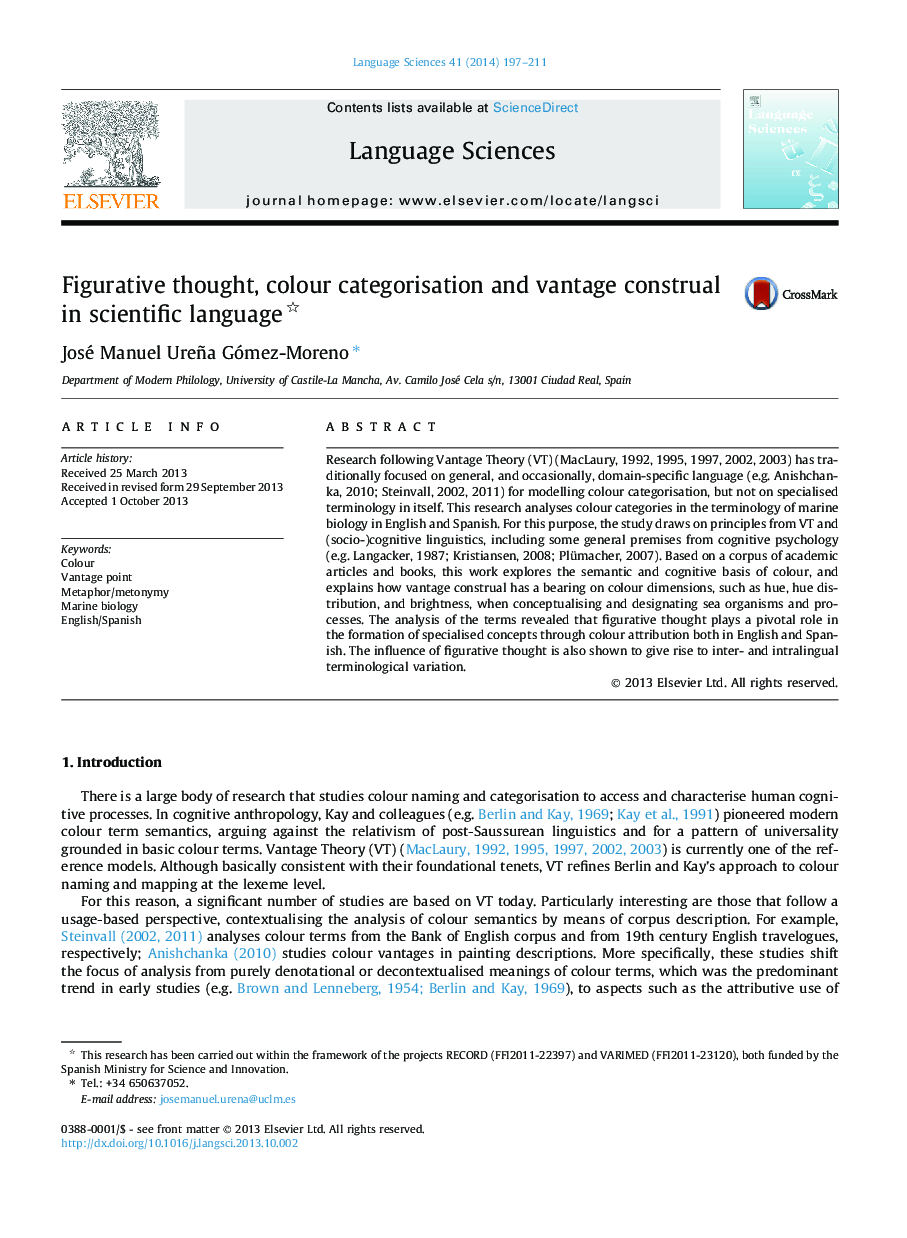| Article ID | Journal | Published Year | Pages | File Type |
|---|---|---|---|---|
| 1103152 | Language Sciences | 2014 | 15 Pages |
•The meaning of many marine biology terms is metonymic and metaphoric. The figurative basis of these terms is colour.•Scientists construe distinct vantages to categorise colours, used to designate sea organisms through figurative thought.•Inclusion, coextension and complementation are crucial for the formation and categorisation of marine biology concepts.•Conventional and unconventional colour dimensions play a pivotal role in the formation of specialised concepts.•Figurative colour conceptualisation gives rise to inter- (English–Spanish) and intralingual terminological variation.
Research following Vantage Theory (VT) (MacLaury, 1992, 1995, 1997, 2002, 2003) has traditionally focused on general, and occasionally, domain-specific language (e.g. Anishchanka, 2010; Steinvall, 2002, 2011) for modelling colour categorisation, but not on specialised terminology in itself. This research analyses colour categories in the terminology of marine biology in English and Spanish. For this purpose, the study draws on principles from VT and (socio-)cognitive linguistics, including some general premises from cognitive psychology (e.g. Langacker, 1987; Kristiansen, 2008; Plümacher, 2007). Based on a corpus of academic articles and books, this work explores the semantic and cognitive basis of colour, and explains how vantage construal has a bearing on colour dimensions, such as hue, hue distribution, and brightness, when conceptualising and designating sea organisms and processes. The analysis of the terms revealed that figurative thought plays a pivotal role in the formation of specialised concepts through colour attribution both in English and Spanish. The influence of figurative thought is also shown to give rise to inter- and intralingual terminological variation.
